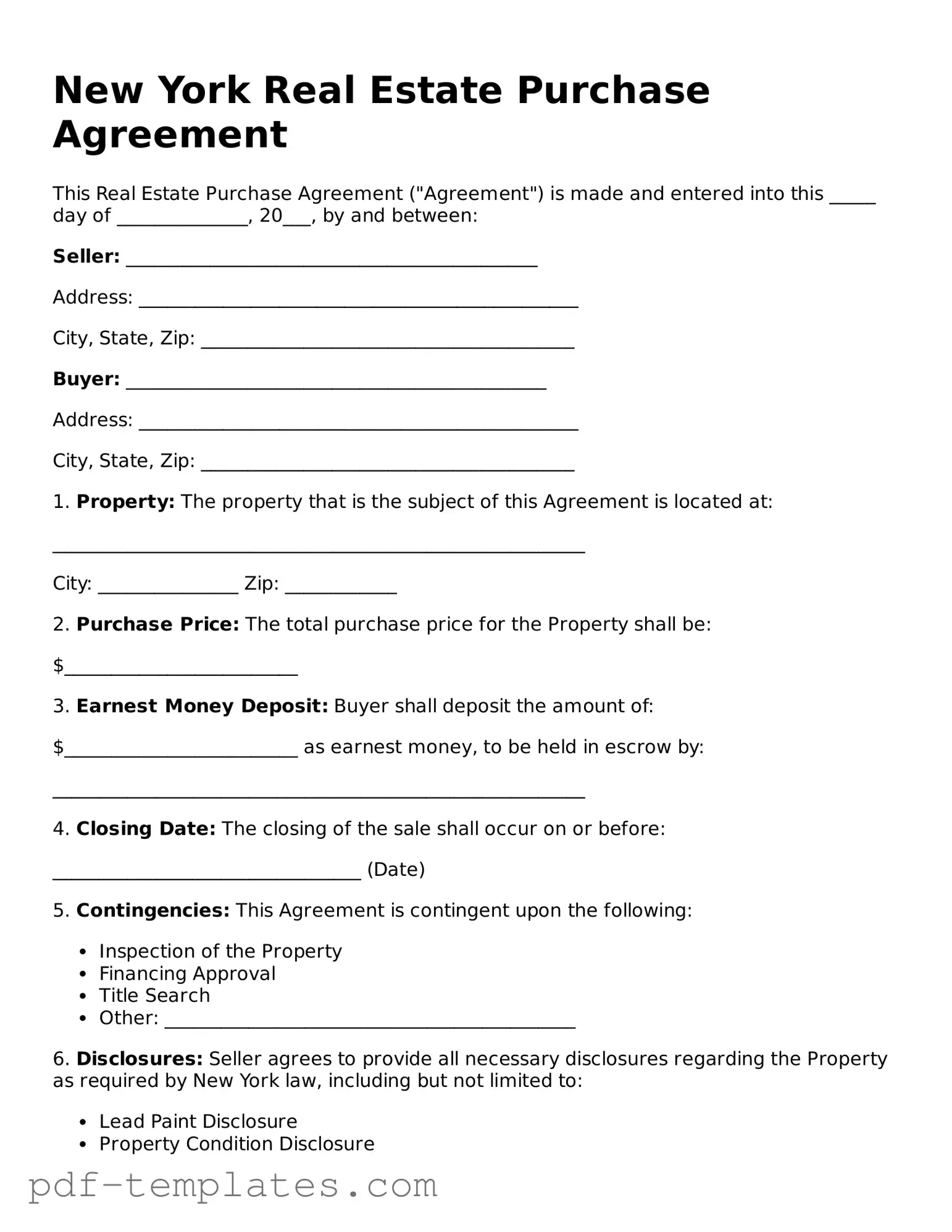The New York Real Estate Purchase Agreement shares similarities with the Residential Purchase Agreement, which is commonly used in many states. Both documents outline the terms and conditions under which a buyer agrees to purchase a property from a seller. They typically include essential details such as the purchase price, closing date, and contingencies related to inspections or financing. Additionally, both agreements provide a framework for the rights and obligations of each party, ensuring that both the buyer and seller understand their responsibilities during the transaction process.
Another document that resembles the New York Real Estate Purchase Agreement is the Commercial Purchase Agreement. While this document is tailored for commercial properties, it serves a similar purpose in detailing the terms of sale. Like the residential version, it includes information about the purchase price and closing timeline. However, it may also incorporate specific clauses relevant to commercial transactions, such as zoning compliance and tenant leases, reflecting the complexities of buying and selling commercial real estate.
The Trader Joe's application form is a vital document for job seekers wishing to join this beloved grocery chain. It outlines necessary information about potential employees and provides an opportunity to showcase their unique skills and experience. Completing the form accurately can significantly increase the chances of landing a position at one of their stores. For more details, job seekers can access the application directly at documentonline.org/blank-trader-joe-s-application.
The Lease Agreement also shares features with the Real Estate Purchase Agreement, particularly in how it outlines the rights and responsibilities of the parties involved. Although a Lease Agreement pertains to renting rather than purchasing, both documents require clear terms regarding payment, duration, and maintenance obligations. Each agreement is designed to protect the interests of the parties, ensuring that expectations are set and met throughout the duration of the contract.
Finally, the Listing Agreement is another document that bears resemblance to the New York Real Estate Purchase Agreement. This agreement is typically used by real estate agents to outline the terms under which a property will be marketed for sale. Similar to the purchase agreement, it specifies important details such as the listing price, duration of the listing, and commission fees for the agent. Both agreements aim to facilitate a smooth transaction process, although they cater to different stages of the real estate process—one focuses on selling while the other centers on the purchase itself.
